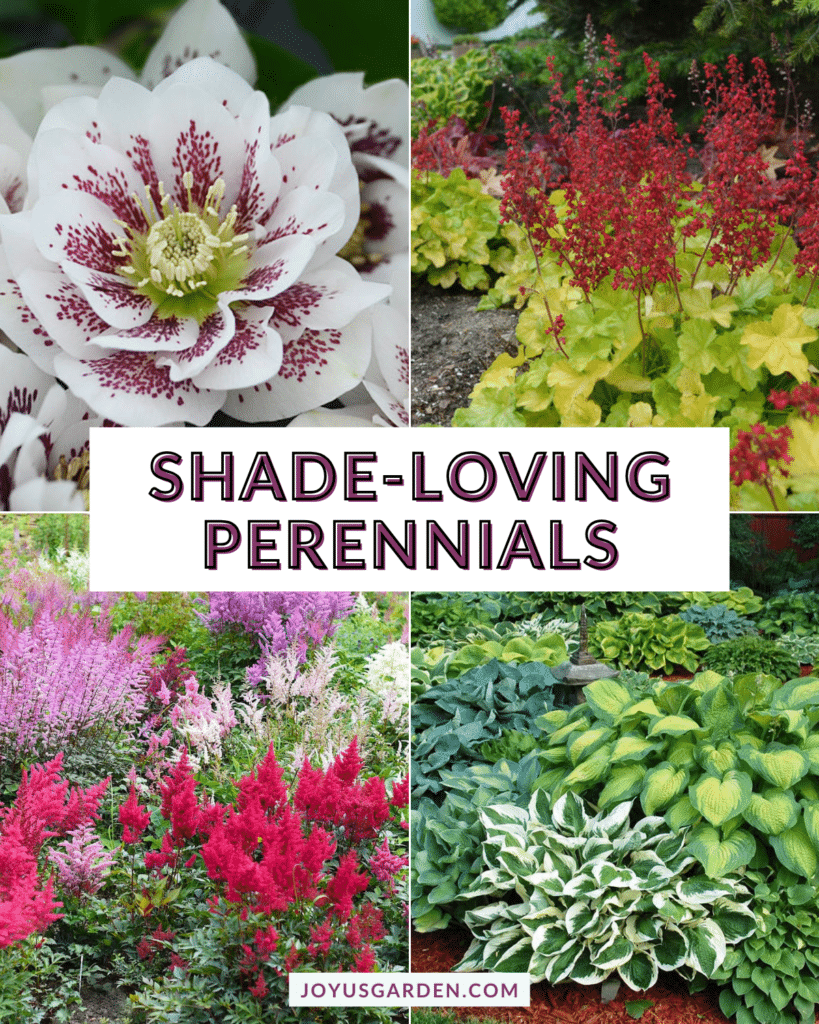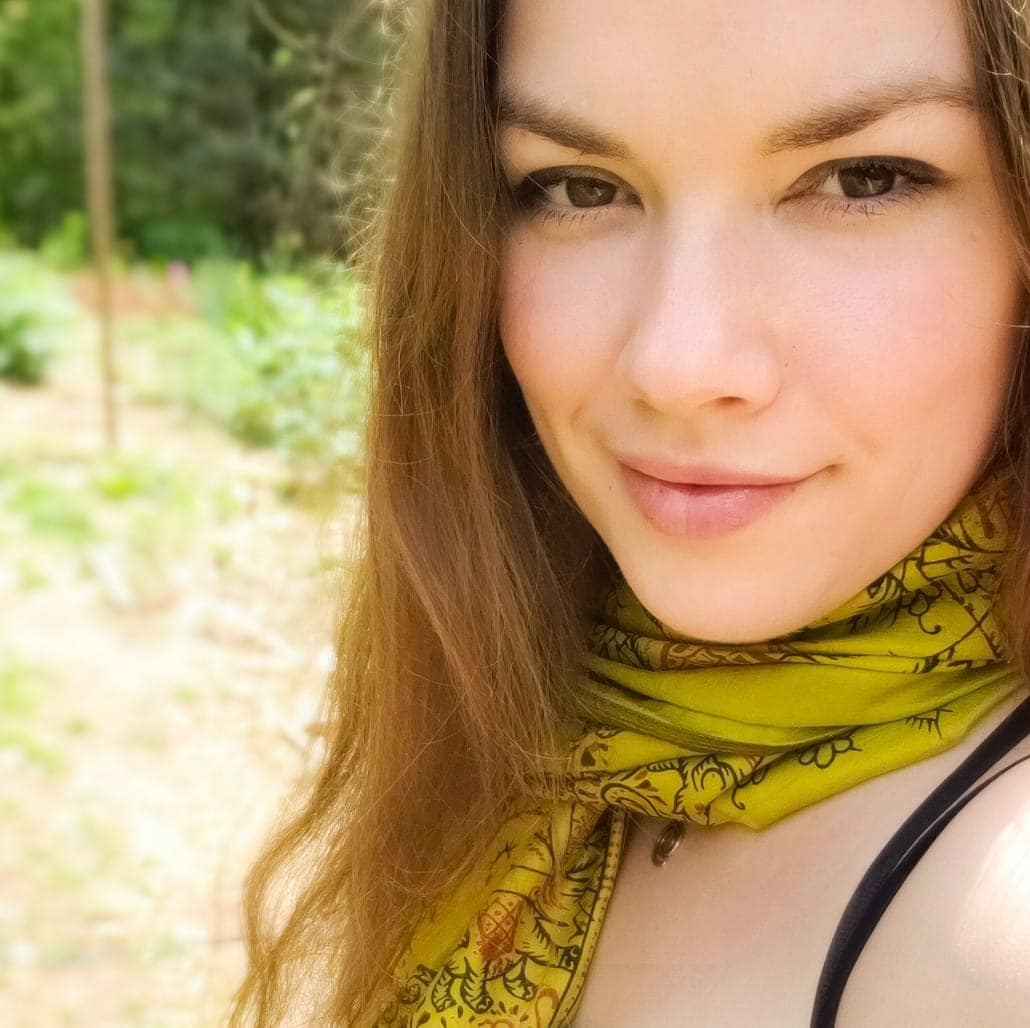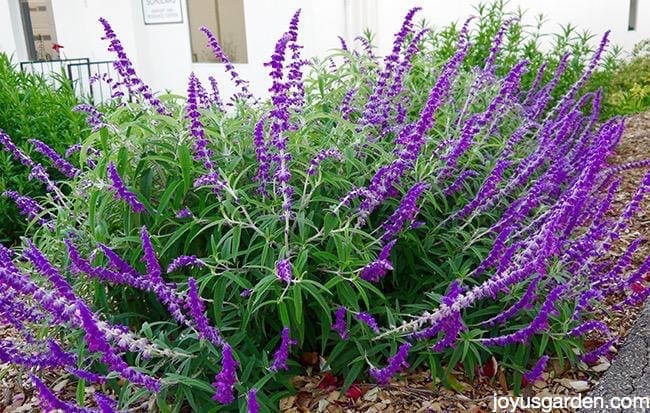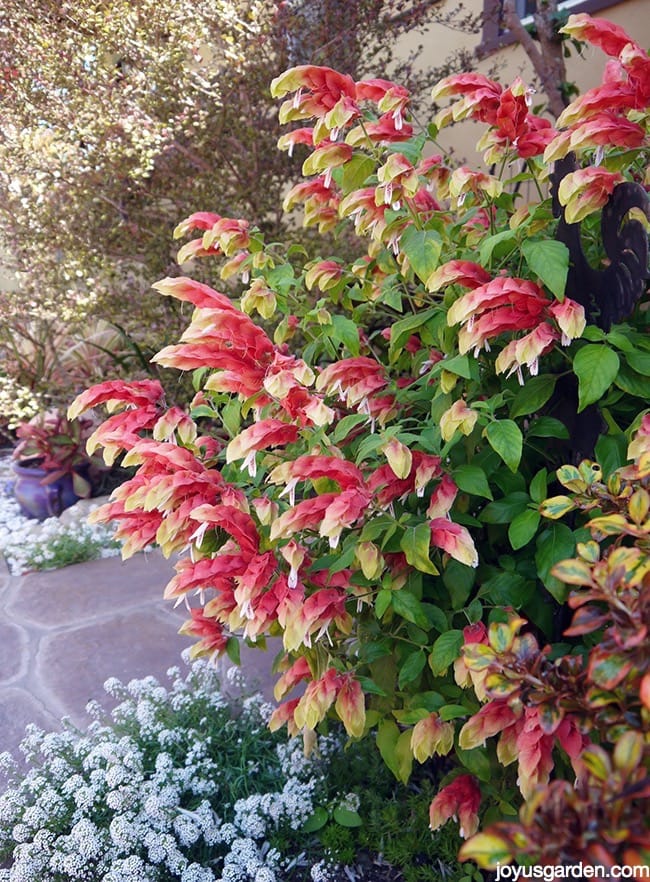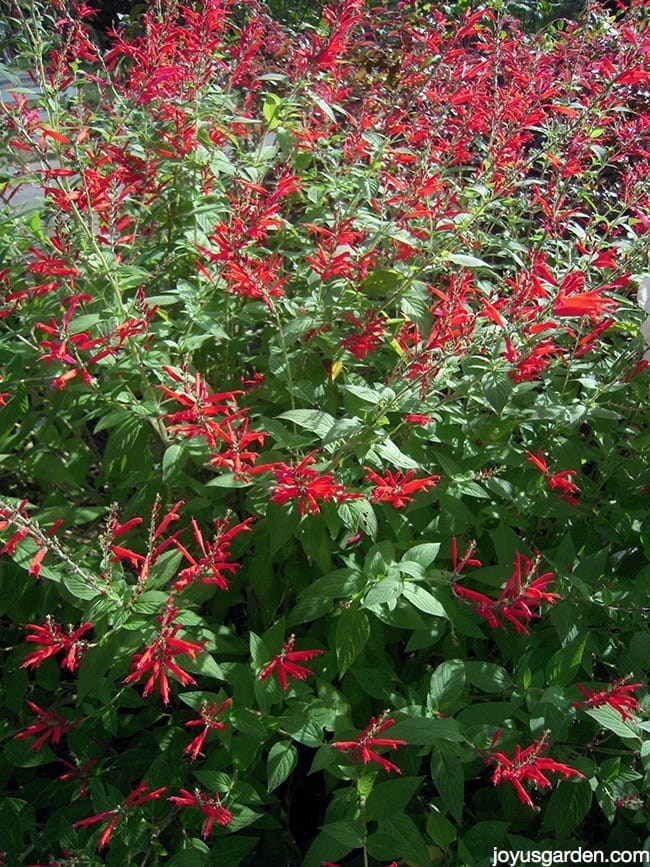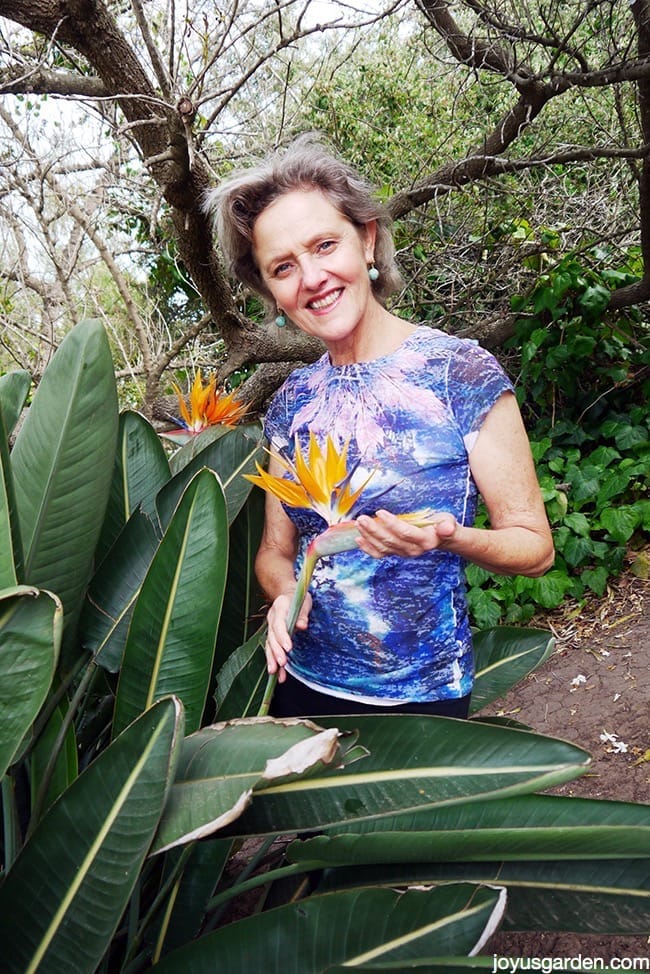Shade-Loving Perennials: Plants To Brighten Shady Gardens
Many perennial flowers crave sunlight and won’t grow or bloom in shady areas. But don’t lose hope if your property doesn’t receive much sun! There are lots of hardy, shade-loving plants that will grow and flower prolifically even in shady gardens.
Read on and discover some of my favorite plants for full shade to part shade, plus handy tips for how to start and grow a shade garden.

Understanding Shade
Before we get into how to keep shade-loving perennials, it’s important to understand the basics of gardening in shade and what different shade garden terms mean.
Full-shade plants need very little direct sunlight but still need some sun! These plants grow best in spots that receive less than 4 hours of direct sun daily, so locate them under trees or in the most shaded areas of your garden.
Partial-shade plants can tolerate a bit more sun than full-shade plants, but they’ll still get sunburned in sunny areas. East-facing gardens that receive between three and six hours of sun will work best for these plants.
Dappled sun is a relatively rare term on plant labels, although you may encounter it occasionally – especially if you’re working with woodland plants and mosses. Dappled sun plants generally don’t want any direct light, and they prefer spots under tree canopies that receive a consistent mixture of light and shade throughout the day.
How To Assess The Shade In Your Garden
There are multiple ways to determine how much light your garden receives, but one of the easiest methods is to create a “light map” of your property.
First, make several maps of your garden on tracing paper. Then, two hours after sunrise, take one of your garden maps and color in the sections on the map that are in deep shade and partial shade. Repeat this process every two to three hours until sunset, coloring in the shady locations of your garden on your remaining tracing paper maps.
Once you have finished all your maps, layer them on top of each other and see where the shady locations overlap. This will give you a general idea of how much light each section of your garden receives and what plants will grow well there. Just keep in mind that light conditions can vary throughout the year, so you may want to map the light in your garden in late spring after your trees leaf out.
Benefits of Shade Loving Perennials
Shade-tolerant plants take much of the worry out of gardening since they aren’t as fussy about light as other ornamentals. Plus, many plants for shade gardens are actually North American natives, which means they’re low maintenance in other ways and may need less water and fertilizer too.
Aside from their practicality, you can find many colorful perennials for shade that will add a much-needed pop of color to low light areas where other plants won’t grow. If you’re interested in keeping a woodland garden, shade plants are a great choice. However, many low light plants can also be grown in container gardens if you need to save space.
New to gardening? Here’s a guide on planting perennials.
Favorite Shade-Loving Perennials
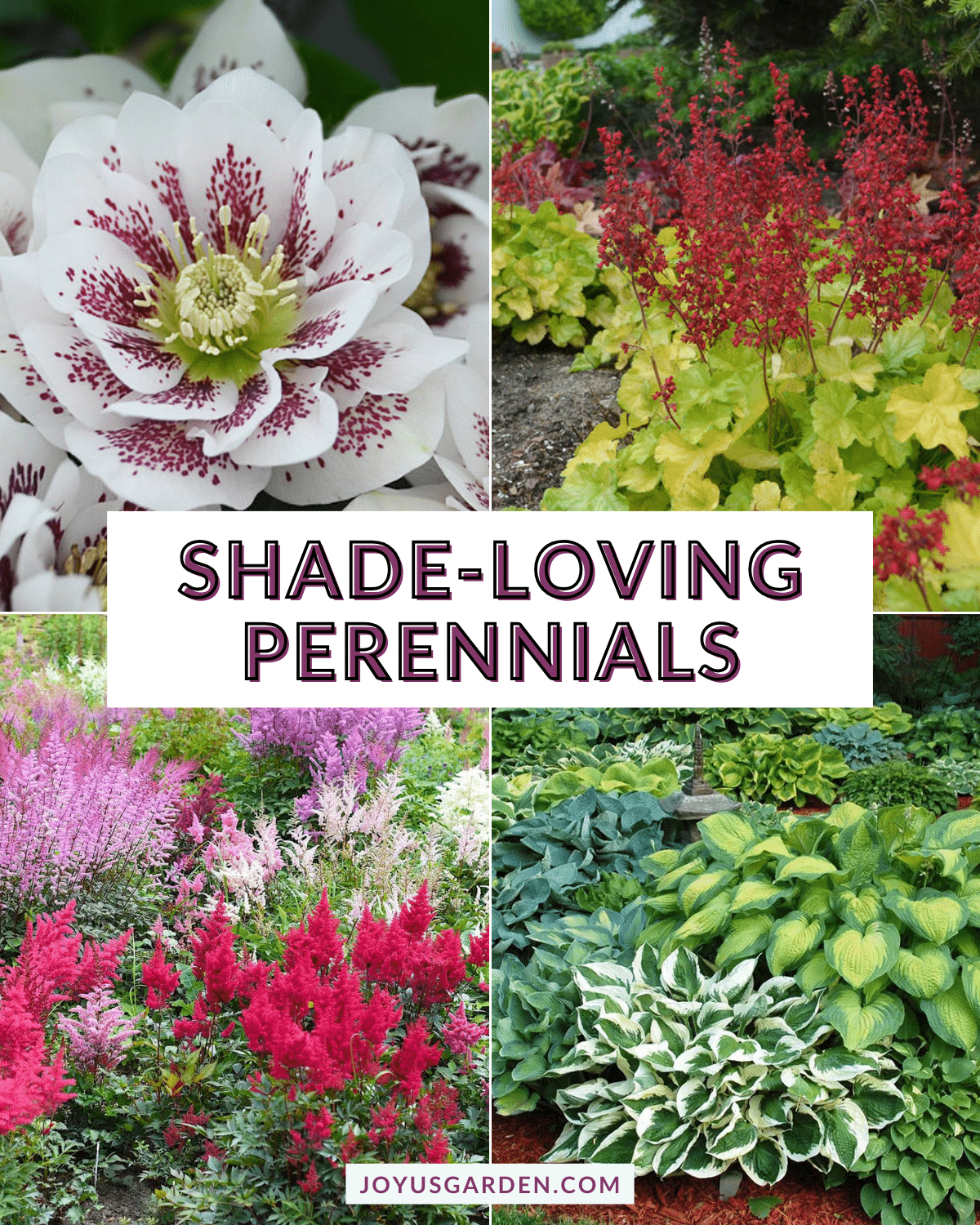
If you want to grow shade perennials in flower beds or as container plants, you’ll find some of my favorite picks below. For season-long color, don’t forget to plant some spring bloomers, as well as plants that flower in early, late summer, and fall.
Heuchera
Also known as coral bells, heuchera are fabulous foliage plants mostly known for their bright leaves in shades of purple, green, gold, and red. But these part-shade plants also produce airy sprays of flowers from late spring to midsummer.
Hosta
Hostas are prized for their variegated or bright green leaves, but they also produce tubular flowers that last from spring through early fall. Hosta plants prefer dappled light and moist soil, and they may need to be watered a few times a week in hot climates.
Astilbe
Astilbe are flashy plants that produce spikes of fluffy flowers in shades of pink, red, purple, and white. If well-tended, astilbe can grow rapidly and form a low maintenance ground cover that naturally suppresses weeds.
Hellebores
Also known as the Lenten rose, hellebores bloom in late winter into early spring… just in time for Easter. Hellebores produce peach, yellow, red, purple, green, or even blue flowers; however, those flowers die back in warm weather, so enjoy them while they last!
Foxglove
A classic choice for cottage gardens, most foxglove plants produce tall spikes of pink or purple flowers, although some varieties produce white or yellow flowers instead. These plants naturally self-seed if you let them, and they’re also highly attractive to hummingbirds!
Foamflowers
Foamflower is a native woodland plant in the Eastern United States but it can be grown in other shady locations. These plants naturally spread in areas with well-drained soil and can be used as groundcovers or for erosion control.
Begonias
With their compact growth habit and showy leaves, begonias are the perfect choice for shade containers and window boxes. If you want a patio or porch plant that draws the eye, try out different varieties of begonias like Angel Wing begonias or the ever-popular Rex begonias. However, begonias only grow as perennials in warm areas.
Japanese Forest Grass
If you want to add texture and a touch of elegance to shady gardens, Japanese forest grass is one of the best plants you can find. These ornamental grasses have a graceful, mound-like growth habit and slender, deep green leaves. The variety “All Gold” lightens up any shaded area with its vibrant chartreuse foliage.
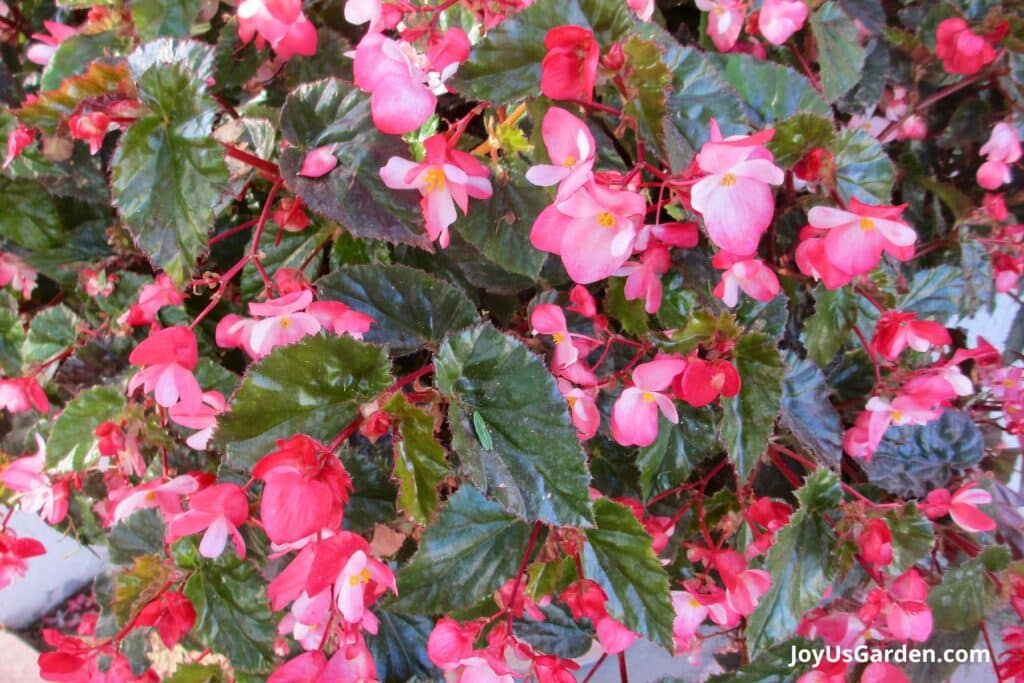
Lily of the Valley
Like astilbes and foamflowers, lily of the valley can be used as a low maintenance groundcover or planted as an accent plant. These low growers are most famous for their fragrant spring-blooming flowers, but they also produce bright red berries in fall.
Toad Lily
Adaptable to full or part shade, toad lilies have curious, purple spotted flowers that look a bit like orchids. Even better, toad lilies bloom in autumn for some late season color!
Bleeding Heart
Easily recognized by their heart-shaped flowers, bleeding hearts bloom in early spring and die back by the time summer hits. Beyond their pink, white, or red flowers, bleeding hearts are also deer-resistant… a definite plus for country living.
Japanese Anemone
Blooming from late summer to early fall, Japanese anemone produces a profuse display of purple, pink, or white flowers. These plants naturally spread over time. This easygoing, shade-loving plant is sure to please and is also pest-resistant.
Ostrich Fern
There are many different varieties of ferns to choose from, but ostrich fern is one of the most popular. Famed for its attractive foliage, ostrich fern is also the fern to grow if you want to harvest edible fiddleheads!
Cinnamon Fern
Most ferns are known for their striking foliage, but cinnamon ferns are particularly colorful thanks to their cinnamon-toned fruiting spikes that emerge in spring.
Boston Fern
Boston ferns grow perennially only in warm areas, and they’re mostly used in container gardening in cooler climates. If you’re looking for a plant to keep in a hanging basket on your front porch, Boston fern is always a good choice… and it makes an attractive houseplant, too.
Maidenhair Fern
Like most other ferns, maidenhair ferns dry up in full sun and dry soils but grow beautifully in moist soils and light shade. These plants can also be brought indoors and added to your houseplant collection!
Sweet Fern
Sweet ferns aren’t actually ferns, but they have that fern-like look thanks to their feathery, dark green foliage. These plants can handle dry spells better than the average fern, and their leaves emit a delightfully sweet fragrance in warm weather!
Caladiums
Caladiums come in a variety of colors and can be quite hardy perennials in frost-free areas. However, grow them in a sheltered spot to protect their colorful foliage from sun damage.
Clivias
Clivias are true showstoppers with their bright blooms in shades of orange, yellow, and white. These plants have a long bloom time, but container plants should be brought indoors before cold weather.
Columbines
Spring-blooming native columbines are essentials in woodland gardens. They can also be planted along tree lines and in other areas that receive partial sun. Eastern red columbines are particularly popular due to their bright red flowers, which attract hummingbirds.
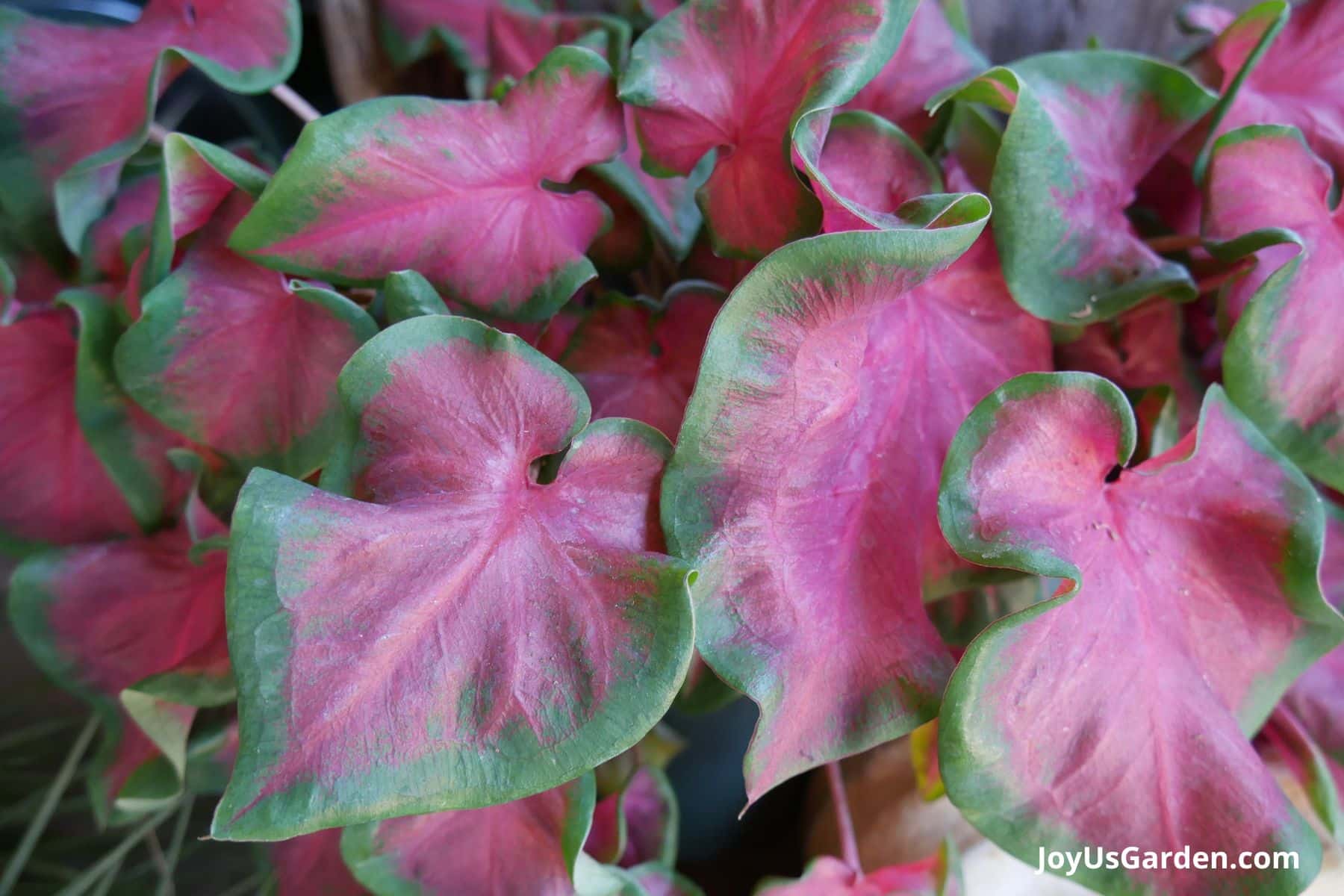
Longest Blooming Shade Perennials
If you want season-long color, you can grow a variety of different shade loving plants that bloom in succession, or you can focus on perennial shade plants with famously long bloom times. Some of the longest blooming shade plants include:
- Hostas
- Clivias
- Begonias
Shade Loving Perennials For Containers
Many shade plants are small enough to grow in porch planters and hanging baskets. If you’re interested in colorful foliage plants, try out shade lovers like:
- Rex begonias
- Coral bells
- Boston Ferns
However, if you want to enjoy some flowers, Angel Wing begonias, clivias, and hellebores are hard to beat.
Gardening in harmony with nature is a good thing. Check out these tips for organic gardening at home.
Soil Preparation
If you choose hardy plants for shade gardens, you may not need to do much soil prep before planting. Just remove existing weeds with hand pulling. Then layer 1 to 2” of aged manure or compost over your garden beds and mix it into the top 6” of soil.
Compost, aged manure, and other organic matter can improve both clay-heavy and sandy soils. These products also enhance soil drainage and fertility. Just be careful not to add too much organic matter. Some native plants can develop floppy stems if grown in overly rich soil!

Design Tips For A Shade Garden
When planning your shade garden, consider the entire growing season and choose plants that bloom at different times of the year. This will keep your garden colorful throughout the changing seasons.
Many gardeners plant one or two statement plants in flower beds or containers and then fill in around these “thriller” plants with shorter perennials and groundcovers. Sowing plants in groups of three or more will also give gardens a more natural look and make plants easier for pollinators (and garden visitors) to see from a distance.
Here are some fun plants with fabulous foliage to add pizazz to your garden.
Best Tips For Growing Shade-Loving Perennials
Shade gardens can be quite low maintenance if you select the right plants and know how to grow them. Follow along with the simple tips below to help your plants and garden grow even better!
- Perennial plants all have slightly different care needs, so be sure to research the plants you’d like to grow before adding them to your garden.
- Choose plants that are well-suited for your garden’s particular light, soil, and water conditions. For example, some perennials prefer dry shade, while others like partial shade and damp soil. If you have a dry garden and don’t want to water often, choose dry shade plants!
- Light levels can fluctuate significantly throughout the year depending on the angle of the sun. If your shade plants get too much sun or too little sun later in the season, you may need to consider transplanting them.
- Watch out for crispy, brown leaves and bleached leaf color. This can mean that your shade plants are getting too much light.
- On the other hand, plants that develop stretched out stems or pale leaves may not be getting enough sun.
- Slugs and snails can be more common in moist, shade gardens. Putting out “slug pubs” filled with old orange juice or beer can keep these pests in check.
- Spring or fall are the best times to plant, divide, or transplant most perennials.
Dark & moody flowers add drama to the garden. Check out our list of black flowers here.
Conclusion
You can grow an incredibly beautiful garden in a shady spot if you start off with the right plants and a bit of gardening know-how. Sheltered from the hot afternoon sun, shade gardens typically need minimal water, and they can provide the perfect habitat for woodland plants and ornamentals with light sensitive leaves.
So why not add a few new plants to that shady corner of your garden or keep some shade-loving perennials in pots on your back patio? Low light plants can liven up dark spots and bring even more color to your outdoor space!
Happy Gardening
-Lauren
Lauren Landers is a Master Gardener and gardeing writer livig in Maine. After running a small organic farm in New England for several years, Lauren transitioned to freelance writing and loves helping others discover the beauty of organic and pollinator gardening!


